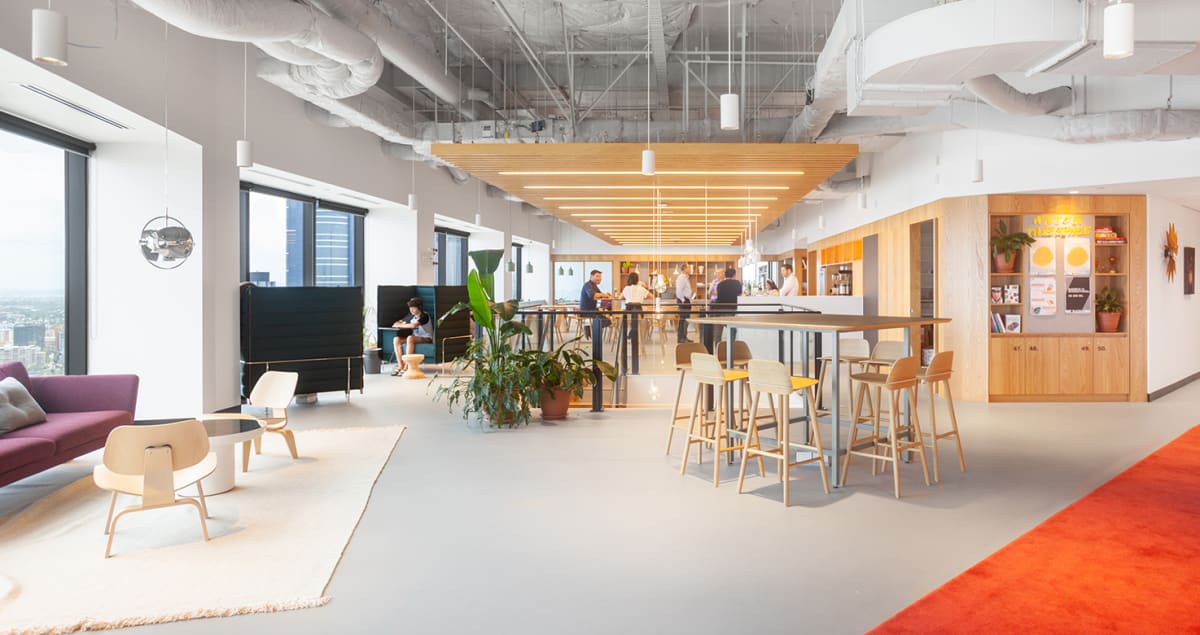Employees who want to work when and where they choose are increasingly calling the shots.
Last year, an IWG survey revealed that almost half of all office workers would quit if asked to go back to the office five days a week. Nearly three quarters said they would prefer the option of hybrid working to a 10% pay rise, if offered the choice.
For employers, it’s clear what people want. But, not so long ago, being able to work from home or a more convenient workspace close to home was something that had to be negotiated with bosses, and more often than not they were hesitant to grant permission in case it set a precedent for others in the same company. Although some forward-looking companies had begun to embrace flexible working, for the majority, an inflexible blanket rule compelling everyone to be at their desk was the default.
Now, employees have the power. According to the US Labor Department, a record high of 4.4 million people (3% of the total workforce) left their jobs in the US in September 2021. This reflects a global upheaval in employment patterns. And following this ‘Great Resignation’, as the phenomenon has been called, the pendulum has swung the other way, as companies compete to attract talent with ever-more compelling policies and perks, offering potential hires the hours, days and locations that suit them best.
Gaining the upper hand
For employees, hybrid working has catalysed the trend for hyper flexibility, which gives professionals the ability to shape their job around their lifestyle. Whereas before the pandemic employers were the ones setting the agenda, during the so-called ‘Great Rehiring’ of 2022 and beyond, it will be employees who determine what work looks like and how it should be integrated into their lives. As Mark Dixon, Founder and CEO of IWG, puts it, “Hybrid working is no longer a ‘nice to have’.”
This is particularly the case for white-collar workers. “Hybrid working is the number one thing candidates ask for as a requirement,” Caroline Copley, a senior manager specialising in finance and accounting at recruiter Robert Half, told the Financial Times. “There will be certain candidates that won’t even go to an interview if they aren’t offering a hybrid opportunity,” she added. “Flexibility is the big deal now,” says Bev White, Chief Executive of Harvey Nash, a specialist in tech recruitment. “People are out of love with long commutes.”
Canny companies are realising how to attract talent in this new world of work. According to flexible working consultancy Timewise, the proportion of job adverts offering flexible working has almost doubled to 26% since the beginning of the pandemic.
As employers increasingly focus on output and performance rather than time spent sitting at a desk in a central office, we could see the adoption of other initiatives that challenge the traditional five-day, 9-5 paradigm. For example, the four-day week has already been successfully trialled in countries such as Iceland and New Zealand. In the UK, more than 30 companies are taking part in a six-month trial of four-day working in an attempt to measure if workers can operate at 100% productivity for 80% of the time.
The increasing demand for hyper flexibility in the workforce is one of ten trends identified in IWG’s white paper, The Future of Work: a trends forecast for 2022. You can download it here.






